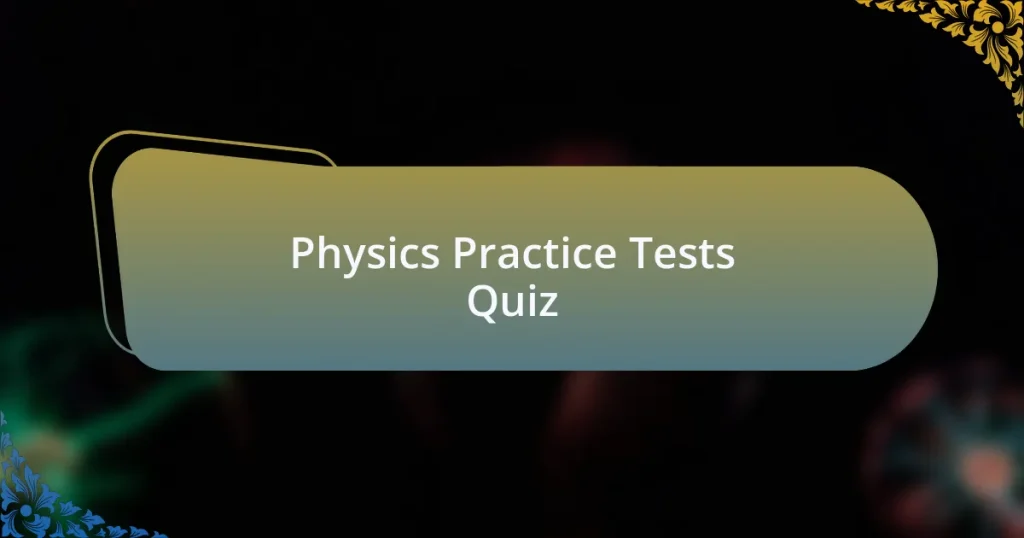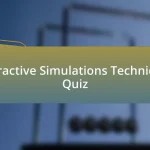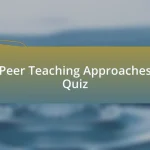Start of Physics Practice Tests Quiz
1. What is the shape of an electron?
- The shape of an electron is spherical.
- The shape of an electron is a triangle.
- The shape of an electron is a cube.
- The shape of an electron is a line.
2. What is the speed of dark?
- There is no speed of dark; it is simply the absence of light.
- The speed of dark is approximately 299,792 kilometers per second.
- The speed of dark is faster than the speed of light.
- The speed of dark is equal to the speed of sound.
3. What is the speed of electricity?
- Approximately 299,792 kilometers per second
- Near 50 kilometers per second
- Exactly 1,000 kilometers per minute
- Around 150,000 kilometers per hour
4. What is the speed of gravity?
- 1,000 kilometers per second
- 299,792 kilometers per second
- 450,000 kilometers per second
- 150,000 kilometers per second
5. What is the strongest magnetic field possible? Is there a limit?
- The strongest magnetic field possible is fixed at 10 Tesla due to natural limits.
- The strongest magnetic field possible is 100 Tesla, which is the maximum reached in experiments.
- The strongest magnetic field possible is theoretically unlimited, but in practice, it is limited by the material`s magnetic saturation point.
- The strongest magnetic field possible is 500 Tesla, which is achievable with current technology.
6. How can a clear object be transparent and visible at the same time?
- A clear object is visible because it blocks light completely.
- A clear object can be transparent and visible because it allows light to pass through while reflecting some light.
- A clear object reflects all light and does not transmit any.
- A clear object can be seen only when it is dirty or colored.
7. How can a material at a certain temperature have all of its molecules at the same energy?
- This can only occur at absolute zero where all motion stops completely.
- This happens due to quantum entanglement of molecules at that temperature.
- This occurs only in a vacuum where no external forces act on the molecules.
- This can happen in an ideal scenario where all molecular energies are equal at that temperature.
8. How can an electron leap between atomic levels without passing through all the space in between?
- Electrons cannot leap between atomic levels as they always travel through the space in between.
- Electrons can leap between energy levels due to quantum mechanics, allowing them to occupy different states instantaneously.
- Electrons move slowly and take time to transition between atomic levels.
- Electrons must gather energy to move through all the space to change levels.
9. How can glass produce glare without reflecting light?
- Glass can produce glare simply because it is transparent, allowing too much light to pass through.
- Glass can produce glare only when sunlight shines directly onto it, creating a bright spot.
- Glass can produce glare due to internal reflections within the glass, not because it is reflecting light from the outside.
- Glass can produce glare by absorbing light completely, preventing it from reaching the observer.
10. How can it be so hard to drag rubber across smooth glass if friction is caused by surface roughness?
- Friction is influenced by adhesion between two surfaces.
- Friction increases with surface smoothness and not the materials.
- Friction is only affected by weight and not material properties.
- Friction relies solely on surface texture between materials.
11. How can radioactive decay just happen with nothing triggering it?
- Radioactive decay only happens at high temperatures.
- Radioactive decay can be triggered by chemical reactions.
- Radioactive decay occurs spontaneously due to the instability of certain atomic nuclei.
- Radioactive decay requires external radiation to occur.
12. How can we travel to the past?
- Traveling to the past is theoretically possible through concepts like wormholes within general relativity.
- We can travel to the past using advanced space rockets designed for time travel.
- Traveling to the past can be achieved by moving really fast, close to the speed of light.
- We can use teleportation to instantly arrive in the past.
13. How did Archimedes use mirrors to burn up invaders` ships?
- Archimedes used mirrors to focus sunlight onto enemy ships, causing them to ignite.
- Archimedes reflected moonlight onto enemy ships, which caused them to sink.
- Archimedes used colored glass to create heat, setting fire to enemy ships.
- Archimedes positioned mirrors underwater to redirect sunlight to burn the ships.
14. How do airplanes fly upside down if it`s the shape of the wings that make them fly?
- Airplanes rely on engine power alone to fly upside down, ignoring wing shape.
- Airplanes use special upside-down wings to fly inverted, which is not true.
- Airplanes cannot fly upside down due to the wing shape being the only factor in lift.
- Airplanes can fly upside down because the shape of the wings provides lift, which is independent of the orientation.
15. How do free energy machines work?
- Free energy machines operate by harnessing energy from quantum fluctuations in a vacuum.
- Free energy machines utilize perpetual motion to create energy indefinitely.
- Free energy machines claim to generate energy without input but are not scientifically valid.
- Free energy machines convert heat from the environment into usable energy without loss.
16. How do levers create energy if the conservation of energy does not allow energy to be created?
- Levers do not create energy; they change the direction or magnitude of force, which is a form of energy transfer.
- Levers generate energy by converting potential energy into kinetic energy.
- Levers produce energy by using friction to amplify force.
- Levers create energy by storing it in their mechanical components.
17. How do projectors project the color black?
- Projectors project black by only using blue light.
- Projectors project black by blocking light or using a black filter.
- Projectors project black by mixing all colors together.
- Projectors project black by reflecting light off a white surface.
18. How do scientists cool objects to absolute zero?
- Scientists use microwave radiation to cool objects to absolute zero.
- Scientists use chemical reactions to cool objects to absolute zero.
- Scientists use electrical resistance heating to cool objects to absolute zero.
- Scientists use cryogenic techniques, such as liquid helium or liquid nitrogen, to cool objects to near absolute zero.
19. How do tractor beams work?
- Tractor beams use gravity to draw objects closer.
- Tractor beams require physical contact to move objects.
- Tractor beams operate by emitting high-frequency sound waves.
- Tractor beams use focused energy to pull objects toward them.
20. How do you focus regular light to make it a laser beam?
- Use lenses to collimate the light into a coherent beam.
- Bend the light with magnets to make it a laser.
- Adjust the intensity of the light using a switch.
- Change the color of the light to make it a laser.
21. How do you make a one-photon-thick beam of light?
- By using a prism to disperse a light beam into a thin line.
- By projecting a regular light bulb through a small opening.
- By using spatially separated laser beams to create a narrow path of photons.
- By illuminating a surface with fluorescent paint.
22. How does a coin know to land heads half of the time?
- Coins know to land heads half the time due to magnetic properties.
- Coins are designed to land heads or tails based on their weight distribution.
- Coins only land heads half the time due to their circular shape.
- Coins have no inherent knowledge; outcomes are based on random chance.
23. How does a microwave oven heat up food even though it emits no thermal radiation?
- Microwave ovens heat food by circulating hot air around it, similar to a regular oven.
- Microwave ovens heat food through contact with metal plates that generate heat when plugged in.
- Microwave ovens heat food by emitting infrared radiation that is absorbed by the food.
- Microwave ovens heat food by causing water molecules in the food to rotate back and forth at the microwave frequency, generating heat through dielectric heating.
24. How does a penny left on the track derail a train?
- A penny sends out a shockwave that disrupts the train`s balance.
- A penny creates a magnetic field that pulls the train off the tracks.
- A penny can cause a train to derail if it gets caught between the wheels and the track.
- A penny repels the train`s wheels, causing them to flip over.
25. How does a photon accelerate to light speed so quickly?
- Photons require a force to push them to light speed like other particles.
- Photons travel at light speed by definition and do not undergo acceleration.
- Photons accelerate before they reach light speed due to energy conversion.
- Photons gradually speed up from zero to light speed as they are emitted.
26. How does quantum theory allow a rock to turn suddenly into a duck?
- Quantum theory states rocks can transform into living beings spontaneously.
- Quantum theory permits macroscopic objects to change shape at will.
- Quantum theory allows objects to change identity based on observation alone.
- Quantum theory allows for superposition and entanglement, hence strange transformations.
27. How does sound going slower in water make it hard to talk to someone underwater?
- Sound travels slower in water, leading to delays in communication.
- Sound travels the same speed in water and air, affecting communication equally.
- Sound is faster in water, making it easier to talk underwater.
- Sound does not travel in water, so talking is impossible.
28. How high does a building have to be for a penny dropped from the top to kill a person on the ground?
- 1000 feet
- 500 feet
- 50 feet
- 200 feet
29. How is a magnetic field just an electric field with relativity applied?
- A magnetic field is caused by moving electric charges and can be understood through the principles of relativity.
- A magnetic field is simply a static electric field that does not change over time.
- A magnetic field arises independently of electric fields and is not related to movement.
- A magnetic field can be created without any electric field being present.
30. How long can you use a cell phone before getting a brain tumor?
- You can safely use a cell phone for 10 years without risk.
- There is no scientific evidence to suggest that using a cell phone increases the risk of getting a brain tumor.
- Cell phone use over 1 hour a day guarantees a brain tumor diagnosis.
- Using a cell phone for 5 hours a day will cause a brain tumor.
Quiz Completion: Congratulations on Finishing the Physics Practice Tests!
Well done! You have successfully completed the quiz on Physics Practice Tests. Throughout this quiz, you engaged with various concepts in physics that challenge your understanding and enhance your problem-solving skills. This process not only helps reinforce fundamental principles but also exposes you to the diverse applications of physics in real-world scenarios.
By participating, you may have learned about key topics such as mechanics, thermodynamics, and electromagnetism. Each question prompted you to think critically and apply your knowledge. This is crucial for anyone preparing for physics exams. Engaging with practice tests is one of the most effective methods to develop confidence and mastery in the subject.
If you found this quiz helpful, we invite you to explore the next section of our page dedicated to Physics Practice Tests. Here, you can deepen your understanding with detailed explanations and additional resources. Furthering your knowledge in physics will undoubtedly support your academic journey. So, don’t hesitate to dive in!
Physics Practice Tests
Understanding Physics Practice Tests
Physics practice tests are assessments designed to evaluate a student’s understanding of physics concepts and principles. They typically cover various topics such as mechanics, thermodynamics, electromagnetism, and optics. These tests simulate real exam conditions, allowing students to apply their knowledge under timed circumstances. Engaging with these assessments helps identify areas of strength and weakness, guiding focused study efforts.
Types of Physics Practice Tests
There are several types of physics practice tests available. These include multiple-choice questions, problem-solving exercises, and conceptual questions. Each type encourages different skills. Multiple-choice tests assess quick recall of facts, while problem-solving exercises challenge students to apply concepts in practical situations. Conceptual questions help deepen understanding of theoretical aspects, reinforcing foundational knowledge.
Benefits of Using Physics Practice Tests
Utilizing physics practice tests offers numerous advantages. They enhance retention and understanding of core concepts through repetition. Students become familiar with the exam format, reducing anxiety on test day. Additionally, these tests often highlight specific topics that require further study, allowing for targeted preparation. Regular practice can lead to improved performance and increased confidence.
Effective Strategies for Physics Test Preparation
Preparing effectively for physics tests involves strategic study practices. Students should review content regularly, rather than cramming. Utilizing practice tests, especially under timed conditions, mirrors real exam scenarios. Analyzing incorrect answers is crucial; it reveals misunderstandings. Combining practice tests with study guides, group discussions, and tutoring often maximizes learning and retention.
Resources for Physics Practice Tests
A variety of resources exist for obtaining physics practice tests. Textbooks often include practice questions at the end of each chapter. Online platforms, such as educational websites and mobile apps, provide a wealth of practice tests tailored to different learning levels. Additionally, standardized test preparation books offer valuable resources and practice exams specifically designed for physics topics.
What are Physics Practice Tests?
Physics practice tests are assessments designed to evaluate a student’s understanding and application of physics concepts. They typically include a variety of questions, such as multiple-choice, short answer, and problem-solving tasks. These tests help identify areas of strength and weakness, guiding students in their study efforts. Studies show that practicing with tests improves retention and problem-solving skills in scientific subjects, enhancing overall performance in physics.
How do Physics Practice Tests benefit students?
Physics practice tests benefit students by reinforcing their knowledge and improving test-taking skills. Regular practice helps familiarize students with the format and types of questions they will encounter in actual exams. Additionally, engaging with practice tests promotes time management skills. Research indicates that repeated testing enhances long-term memory retention, which is crucial for mastering complex physics topics.
Where can students find Physics Practice Tests?
Students can find physics practice tests in various locations, including educational websites, textbook resources, and test preparation books. Numerous online platforms offer free or paid practice tests tailored to specific physics curricula. For example, sites like Khan Academy and Physics Classroom provide comprehensive practice resources to help students prepare effectively.
When should students use Physics Practice Tests?
Students should use physics practice tests throughout their study period, especially during the lead-up to exams. Integrating practice tests into a study schedule enables more effective review of concepts and helps track progress. For optimal results, it is recommended to take practice tests after completing a major topic or chapter to reinforce learning and identify areas needing further review.
Who can benefit from taking Physics Practice Tests?
High school and college students preparing for physics exams can benefit significantly from taking physics practice tests. Additionally, individuals studying for standardized tests that include a physics component, such as the SAT or ACT, will also find these tests useful. According to educational research, regular testing improves performance not just for students but also for anyone requiring a solid grasp of physics principles in technical fields.















